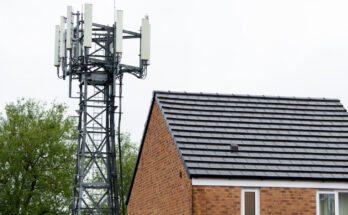The Cheery Ground Cover That Produces Dazzling Blooms & Attracts Colorful Butterflies
When you think of flowers that attract butterflies, what do you picture? Whatever you see in your mind’s eye, it’s probably not a ground cover. However, if you’re looking to make the most of every inch of space in your garden, a ground cover that attracts a wide range of butterflies just might make sense. Prairie zinnia (Zinnia grandiflora) goes by many names, like wild zinnia and even Rocky Mountain zinnia, but no matter what you call it, it could be worth adding to your pollinator garden.
Prairie zinnia produces yellow flowers in mid-summer, and ends up growing to roughly 4 to 8 inches high. This ground cover will generally last until the first frost, keeping moths and butterflies visiting for months. Native to the southwestern United States, prairie zinnia has an additional benefit for gardeners in arid climates where water conservation is a priority – it’s drought-tolerant. Since prairie zinnia can thrive in harsh conditions, it is often used to stabilize hillsides and other rougher areas of a garden. Rocky, sandy soils are no problem for this tough little plant, and it can tolerate a wide range of moisture conditions, though it will bloom best with proper watering. It spreads slowly by rhizomes, and even though it’s native to hot, dry areas, this plant is perennial in USDA Zones 4-9.
What to know about growing prairie zinnia
Growing and caring for zinnias (Zinnia elegans) is very different from prairie zinnias. These otherwise tough plants will get root rot if over watered during cool weather, especially after transplanting. Refrain from watering until the plant begin to grow in hot weather. The roots also don’t like to be disturbed, so resist the urge to scratch the roots during planting.
Varieties like ‘Gold on Blue’ will grow in clumps up to 18 inches wide. Make sure to plant it in late spring or early summer to give this heat loving flower time to establish itself before cold weather sets in. Generally, this is a pretty hands-off plant, with a spring clean-up being the only real maintenance required. These plants won’t begin to grow until summer weather arrives so don’t worry if they don’t show signs of immediate growth in the spring. Simply cut back old foliage and wait.
You can also pair prairie zinnia with purple coneflower (Echinacea purpurea) which similarly loves full-sun and can thrive in many conditions. Coneflower will also have birds and butterflies flocking to your yard. Plus, with just a few more strategic plant choices you can turn your yard into a full-blown pollinator paradise. Blazing star (Liatris) is a long-lasting purple flower that will attract hummingbirds and can pair nicely with prairie zinnia. Meanwhile, giant hyssop (Agastache rupestris) is a favorite of butterflies and can thrive in similar conditions to these other garden partners.


